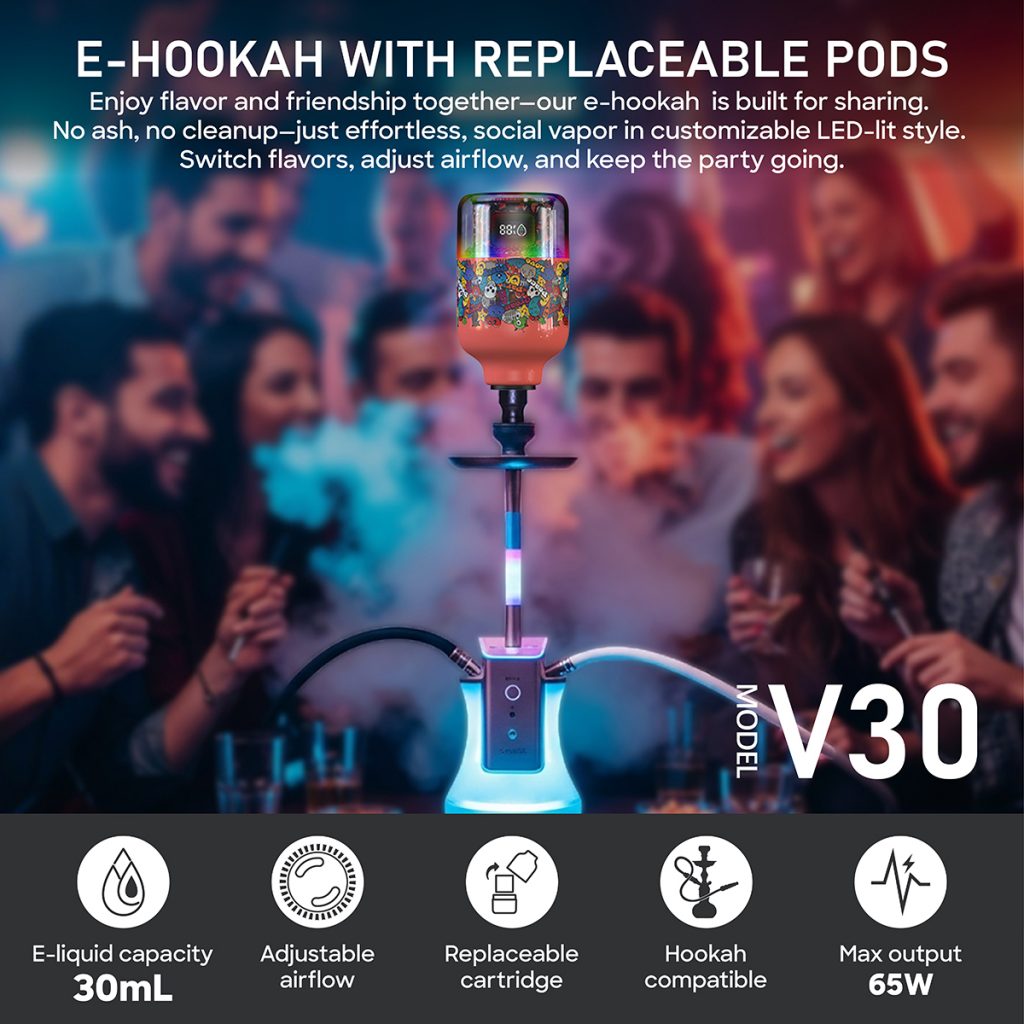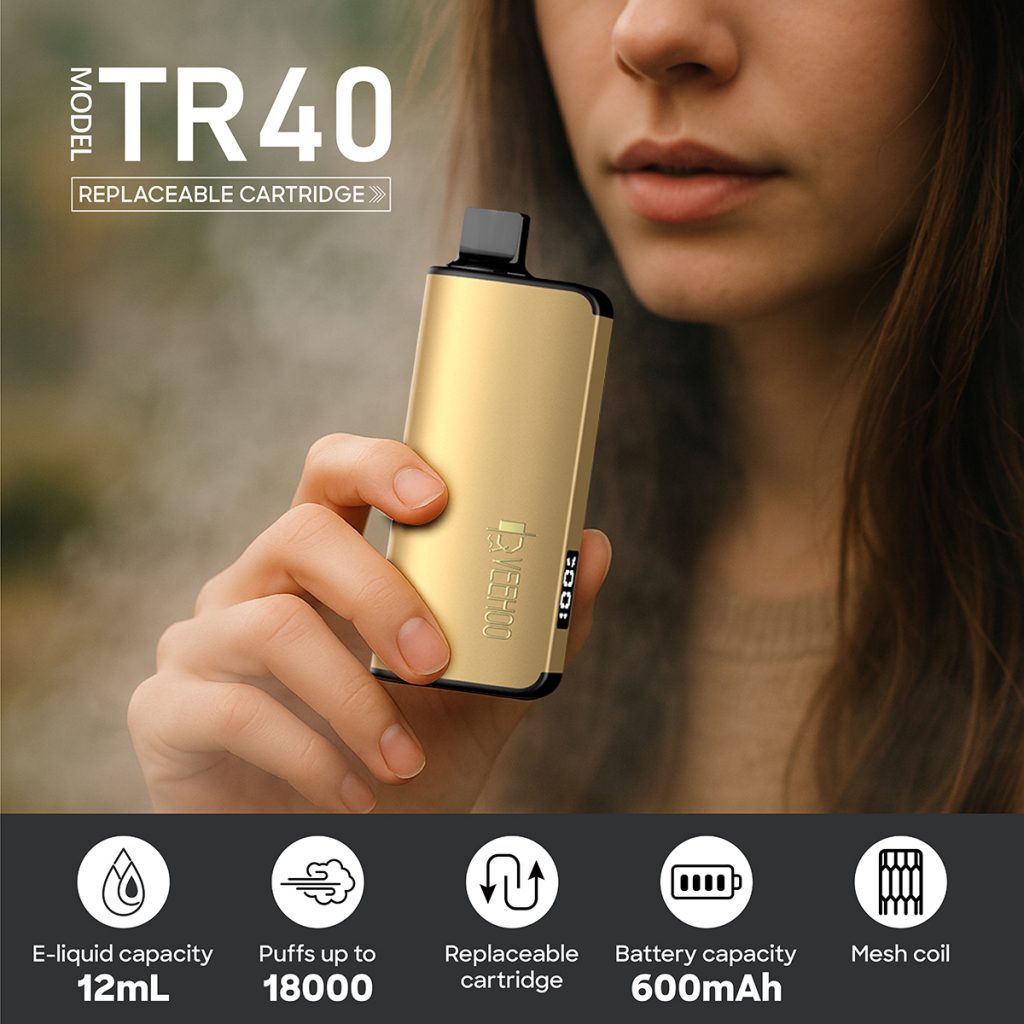In Malaysia, a Southeast Asian nation, the issue of e-cigarettes (vapes/e-cigarettes) has long been a focal point of public health, legal, and ethical debate. Recently, Malaysia’s Health Minister, Datuk Seri Dr. Dzulkefly Ahmad, revealed that the government is moving forward with a plan to completely ban the sale and use of e-cigarettes and vaping devices by mid-2026 or later. However, the ban will not be comprehensive all at once, but will be implemented in a phased, expanded approach. This announcement immediately sparked widespread public concern and controversy, particularly among e-cigarette manufacturers, retailers, public health experts, and consumer rights groups. Discussions raged over the method and effectiveness of the ban, as well as whether there was room to maintain the legality of certain e-cigarette products, such as closed systems or pre-filled pods.
Looking back at the legal and regulatory landscape of e-cigarettes in Malaysia, the Control of Smoking Products for Public Health Act 2024 (Act 852) officially came into effect on October 1st of last year. This law regulates the sale, advertising, labeling, online sales, and sales to minors of smoking and e-cigarette products. Under this legal framework, e-cigarettes are not immediately banned, but rather classified as regulated, subject to licensing, labeling, and advertising restrictions. At the state level, there has been a trend of suspending or not renewing e-cigarette retail licenses, with states like Johor, Kelantan, Terengganu, Perlis, Kedah, and Pahang making such decisions. Furthermore, medical groups, such as the Malaysian Medical Association, have publicly called for a nationwide e-cigarette ban to prevent youth abuse and prevent e-cigarette-related lung disease and e-cigarette-associated injuries (EVALI).
In the latest development, Health Minister Dzulkefly stated that the government is drafting a Cabinet Memorandum (CM) on a complete ban on the sale of e-cigarette products to facilitate policy implementation at the federal level. This “complete ban” does not mean an overnight ban, but rather is expected to begin with “open-system vapes” (devices that are not sealed or fully regulated and allow users to add or replace e-liquids, e-liquids, flavors, etc.) and gradually expand to cover all types of e-cigarette devices and liquids. The Ministry of Health has set a mid-term target of mid-2026 for phased implementation, with full implementation by the second half of that year at the latest. The draft ban has been carefully considered, considering health risks, the risk of illegal e-liquids or adulteration, enforcement and legal challenges, and industry and tax implications.

Policy proponents emphasize the necessity and practical considerations of a phased implementation. Open-system devices are the first category to be included in the ban because they pose a greater risk of uncontrolled user addition of liquids (there have even been reports that some e-liquids contain banned substances or narcotics). Inadequacies in technical and product safety standards, user health monitoring, and the difficulty in controlling illegal sales channels are all factors driving the government’s consideration of gradual tightening and ultimately a complete ban. Furthermore, policymakers must weigh legal liability, the rights of legitimate industry operators and consumers, and the potential for smuggling and underground markets to emerge after the ban.
However, precisely within this policy environment and public pressure, e-cigarette brands must explore product types that comply with regulations, offer lower risks, and are socially acceptable if they hope to continue to survive or operate legally. Here, we consider the potential “positive aspects” or advantages of an e-cigarette brand—VEEHOO (a hypothetical e-cigarette brand that already exists or could enter the Malaysian market in the future)—in this policy context, and how it might adapt to the phased ban and regulatory requirements.
If VEEHOO were to enter or already operate in the market, it might demonstrate advantages in the following areas, potentially allowing it to survive under the phased ban or become a candidate for a “harm-reduction alternative” in public health policy. First, if VEEHOO’s products are closed-system or pre-filled pods, preventing users from adding e-liquid/liquid themselves, this design makes it easier to control liquid composition and reduce the risk of adulteration or illegal additives compared to open-system products. Open-system products are prioritized in the policy’s ban, but closed-system products with high quality standards and transparent oversight may be considered a lower-risk option.
Second, if VEEHOO clearly displays nicotine content, liquid capacity, health warnings (including pictorial or text warnings), and packaging standards that comply with government and legislative requirements on product labels, consumers and regulators will be more easily able to identify compliant products. Clear labeling will also help educate the public about the risks and restrictions of e-cigarettes and reduce misleading advertising or promotions.
Furthermore, if VEEHOO commits to selling only to adults, implements strict identity verification mechanisms, avoids advertising that attracts underage users, and avoids convenience stores and unlicensed small shops selling these products, its corporate behavior may be seen as a responsible market player. Such brand behavior is more likely to maintain its market legitimacy when regulations are tightened.
Furthermore, if VEEHOO can pass third-party testing and certification (where permitted by Malaysian law or international standards are available) to ensure that its liquid ingredients do not contain illegal additives, heavy metals, or excessive levels of harmful chemicals, it could also enhance its positive image during policy reviews. Such testing compliance could help reduce negative cases of EVALI (Electronic Cigarette or Vapor Product-Associated Lung Injury) or other health issues related to e-cigarettes, thereby increasing trust with regulators and the public.

From a user experience perspective, if VEEHOO offers a variety of flavors, safe atomization, reasonable cost control, high device reliability, convenient charging, and easy operation within a closed system, while emphasizing its use as an “alternative” or “transitional” option for traditional cigarette smokers rather than targeting non-smokers or youth, this brand positioning may be more acceptable to policymakers. Compared to open systems that allow for risky, illicit e-liquid or self-mixing, these closed, standardized, and controlled products with “positive aspects” are more likely to receive regulatory leniency or policy exemptions (if policies allow certain types of e-cigarettes to continue under strict conditions).
Whether implementing a full or phased ban, there are controversies and risks, which are closely linked to the fate of VEEHOO and similar brands. Banning open systems may be an acceptable first step, but if the next phase involves a complete ban on closed systems or all e-cigarettes, legal brands will lose market share and users may turn to the illegal market, where product safety is often questionable. Consumers, while demand persists, will be forced to buy products of unknown origin, uncertified products, inaccurate labeling, or potentially higher levels of adulteration. Many public health experts have pointed out that a blanket ban could have negative side effects, including difficulties in oversight and enforcement, loss of legitimate tax revenue, loss of profits for legitimate retailers, damage to consumer rights, and deprivation of smoking cessation aids and alternatives.
Retailers and some representatives from the e-cigarette industry have also spoken out. They argue that rather than a complete ban, strengthening existing regulations and systems is preferable, including increased oversight of illegal sales channels, stricter monitoring of online sales, increased penalties for violators, and ensuring that legal products are registered and meet safety and labeling standards. Industry representatives point out that legitimate brands that adjust their product lines promptly, such as discontinuing open-system devices and introducing fully enclosed or prefilled models with transparent liquid content and proper labeling, are more likely to maintain compliance and market share before the ban.
The government faces multiple legal, administrative, and societal challenges in proposing this phased ban. Legally, Act 852 has created a “legitimate expectation” in the industry. If certain activities were suddenly and comprehensively banned, which were permitted or registered when the regulation first came into effect, the industry might file contractual or legal claims. Administratively, state and federal governments have varying capabilities in licensing and renewal, retail licensing, enforcement resources and mechanisms, and online transaction oversight. Public opinion is concerned about the access and appeal of e-cigarettes to minors, particularly parents and educators. At the same time, smokers and those who rely on e-cigarettes as an alternative to quitting or reducing smoking will oppose overly harsh or swift bans. Policies must balance public health, safety, legal justice, and economic impact. —
If the aforementioned VEEHOO brand is used as a hypothetical or real-world example, its future could follow several paths: First, actively cooperate with government policies, focusing resources on closed-system products, discontinuing open product lines, and actively completing product registration and testing; second, strengthen user and market education, transparently displaying ingredients, warnings, and safety risks; third, participate in policy dialogue, incorporate legitimate industry interests into the legislative and policymaking processes, and provide professional industry advice to inform policy; and fourth, provide smoking alternatives and cessation support for smokers, for example, by discouraging non-smokers from trying products in marketing and refraining from glorifying flavors or packaging designs to attract young people.

Looking ahead, if Malaysia’s phased ban is implemented as planned, with a mid-term goal of implementing a partial ban by mid-2026, the following public health benefits are likely: The use of open-system e-cigarettes may decrease, the risk of adulteration with illicit liquids may decrease, and e-cigarette-related lung injury or poisoning cases (particularly those related to illegal or unregulated liquids) may decrease. Enforcement and regulatory gaps may be addressed, leading to a more regulated legal market. Legal brands that successfully navigate this market will gain greater market trust and consumer loyalty. At the same time, challenges remain, including the potential for a resurgence of the black market, rising costs for legal products, increased burdens on consumers, potential loss of livelihoods for some small businesses, and the question of whether the policy enforcement and regulatory systems are sufficiently strong and fair.
In short, the question of Malaysia’s implementation of a comprehensive e-cigarette ban is no longer a question of “whether to ban,” but rather “when to implement,” “how to phase in implementation,” “which types of products can be licensed or regulated,” “how brands and the industry should adjust,” and “how to balance legitimate consumer rights with public health objectives.” In this environment, if brands like VEEHOO can grasp the key elements valued by policymakers and the public—”closed system,” “product standardization and quality control,” “transparent labeling and warnings,” and “targeting adult users”—they may be able to maintain their position amid tightening regulations and be seen as a lower-risk alternative to open-system e-cigarettes or illicit liquid products.
In conclusion, people’s expectations and concerns about e-cigarette policies are genuine. The government’s stance is generally driven by the public health burden and unknown risks, while the industry and consumers focus more on experience, freedom of choice, and economic benefits. If a phased ban is well-designed, transparent, and feasible, and allows room for industry and consumers to adapt, it could minimize the negative impact of the policy while maximizing public health benefits. If compliant brands like VEEHOO can effectively play the role of “regulated alternatives” under legal and social oversight, they will not only benefit their own survival but also provide some smokers with a safer alternative to traditional cigarettes.
Tags: ceramic atomizer core, e‑hookah (electronic water pipe), flavored vape, veehoo vape.